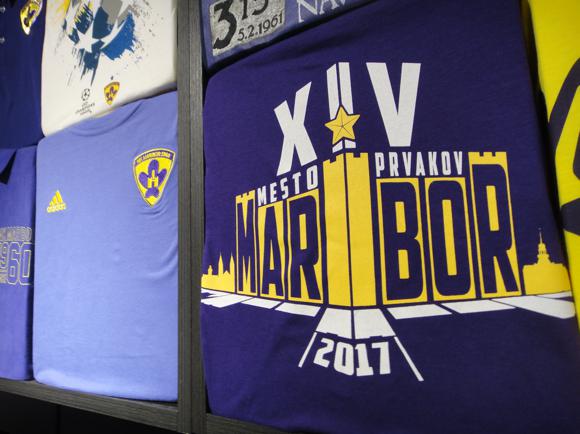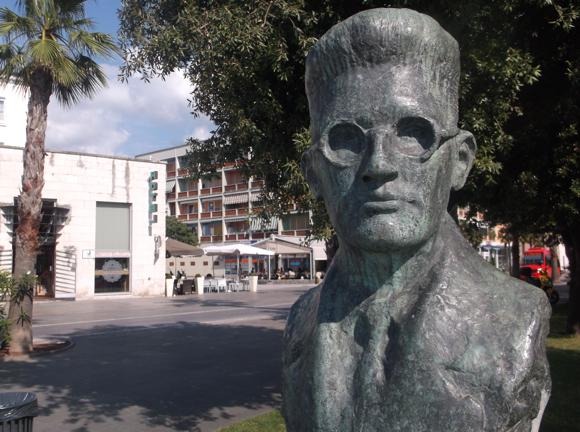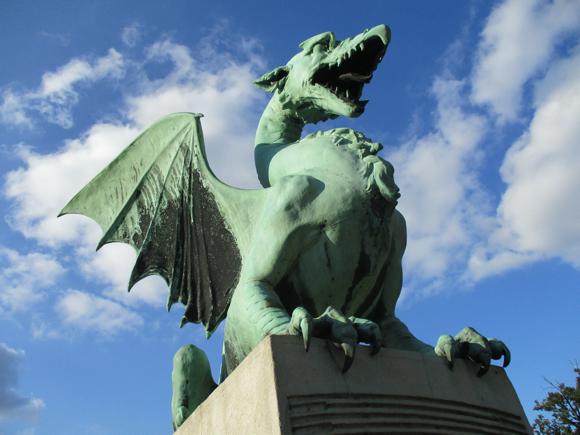Teams, tales and tips – a guide to the local game
Slovenia’s second largest city is its football capital. Home of the most decorated champions, Maribor has seen the title come to Lower Styria six times since 2011.
NK Maribor have dominated the Slovenian championship since independence in 1991. With the fieriest fan culture and a stadium known as a temple of football, the Violets also run the country’s most developed youth academy.
NK Maribor are also the only Slovenian club to have competed in the group stages of the Champions League.

Close to the Alps and the Austrian border, Maribor has long been a centre for winter sports – Slovenia’s largest ski resort is on its doorstep. Organised football has been played here since around the time of World War I, when Maribor, then Marburg, was gradually wrested by the Slovenes from Austrian rule. Teams such as SK Aero and I.SSK Maribor, forerunners of NK, played friendly matches with their German-speaking counterparts Hertha and Rapid Marburg.
A Slovenian League was formed in 1920, first dominated Ilirija of Ljubljana, five-time runners-up Rapid the strongest representatives from Maribor.
Based at Ljudski vrt, I.SSK Maribor had been founded at the Jadran pub on today’s Partizanska cesta near the train station. In 1927, they were joined by later city rivals, Železničar, a railway workers’ club in the classic mould. The pair helped break Ljubljana’s hold on Slovenian football and won five titles between them between 1930 and 1941.

None made any impact at a higher level, the league for the top clubs from Serbia, Slovenia and Croatia, monopolised by teams from Zagreb, Belgrade and Split. In fact, no Slovenian club would win a single pan-Yugoslav title before the break-up of the republic in 1991.
I.SSK folded during World War II, their members arrested and deported by occupying Nazi forces. Another club, FD, later SSD Polet, later Branik Maribor, was set up in their place.
Branik would twice win the Slovenian League, Yugoslavia’s de facto third tier. Branik’s attempt to gain promotion to the second flight ended in bizarre controversy. Trailing Karlovac of Croatia 2-0 after the first leg, Branik strode out alone onto the Ljudski vrt pitch for the return fixture in August 1960. Staying at Maribor’s Hotel Orel, Karlovac had succumbed to mass food poisoning and were unable to field a full side.
Though no evidence of foul play was later found, Branik were effectively dissolved. That December, NK Maribor were founded, providing Slovenia’s second city with a football club.

Modern-day NK are today’s powerhouse of Slovenian football, taking over from Olimpija of Ljubljana in the mid-1990s. Around the same time, the Slovenia national side began playing at Ljudski vrt, which has become one of two main venues for qualifying matches for major tournaments. Many fans are said to favour Maribor because of the atmosphere at Ljudski vrt.
Železničar, meanwhile, still exist, founding members of the independent Slovenian Second League in 1991, based at the functional Tabor Sports Park.
Promoted that first season, the blue-and-whites gradually dropped through the Slovenian league system to the lowest local level. Currently, the club only runs youth teams.
Getting Around
Arriving in town, local transport and timings


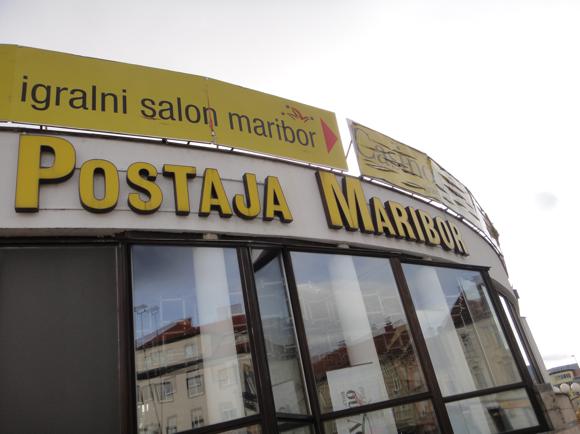
Maribor’s Edvard Rusjan Airport, 10km (six miles) south of town, is underused and not served by public transport. TAXI PLUS (+386 2 2517 151) should charge around €15-€18.
Slovenia’s main airport is in Ljubljana 130km (80 miles) away, with no direct public transport to Maribor. An hourly bus (€4.10 – Brnik/airport Ljubljana on the schedule) runs to Ljubljana 24km (15 miles away), where the main bus and train stations are next to each other, a short walk from the city centre. Trains to Maribor run every 1-2hrs, 2-2.5hrs journey time, tickets €16. Less frequent buses are quicker.
The nearest main airport is over the border in Graz, 9.5km (six miles) south of Graz, 65km (40 miles) from Maribor. A bus (€2.10) runs every 30-60mins to Graz train station, journey time 12mins. One train a day runs direct to Maribor (1hr, €16). Alternatively, an S-Bahn runs to Spielfeld-Straß (52min), from where a regional train takes 20mins to Maribor. A taxi to Maribor (€100) from Graz airport should take 45mins, to Graz 15mins (€25-30).
Buses comprise Maribor’s public transport. A single ticket is €2 on board, €0.80 if bought from a kiosk. A day ticket is €3. Maribor city centre and stadium are walkable.
Where to Drink
The best pubs and bars for football fans




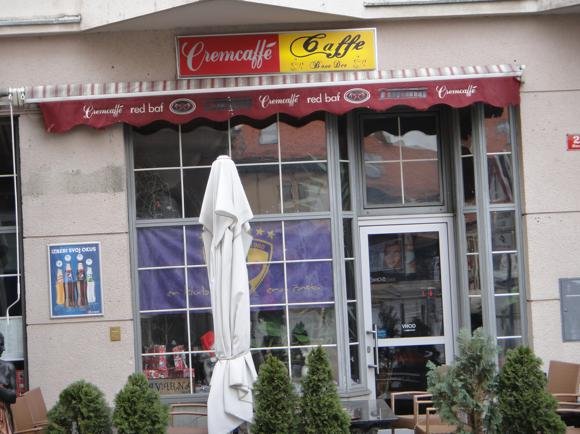


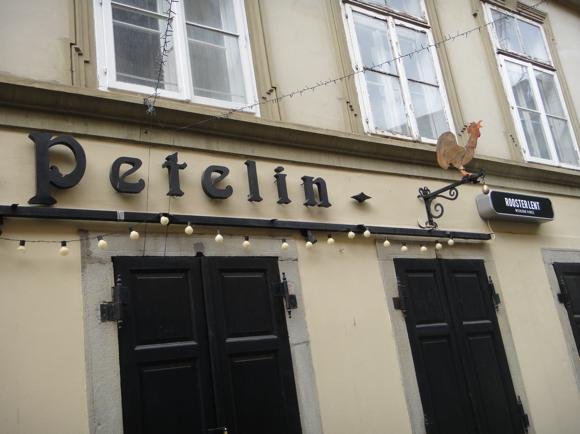


Maribor is close to Laško, home of Laško pivo, Slovenia’s most popular beer and major competitor to Union from Ljubljana. Several bars are dotted around Glavni trg, either on Poštna ulica or on the main square itself.
On Poštna, Patrick’s has been a football-friendly spot popular with locals since 1998. Round the corner on the main square, The Living Room is quality, a bar/pub with a subtle Hartlepool theme created by its owner. Having married a local lass, Dave decorated his place with iconography related to his travels and his roots – note the monkey behind the counter and on the menu. It’s a relaxing place to watch TV football, with regularly changing guest ales and plentiful whiskies. Note, also. evidence of Wigan’s visit.
Nearby nana is a standard café that shows match action while across the square, the Caffe Bona Dea (Židovska ulica 2A) flies the flag of Maribor.
From here, towards the river, pubs and nightspots abound: late-night Latin-tinged Fuego down a little alleyway, locals’ favourite Petelin (Dravska 6), newly renovated cocktail bar Piranha on the waterfront and irreverent rock haunt Rokaj just the other side of the bridge.


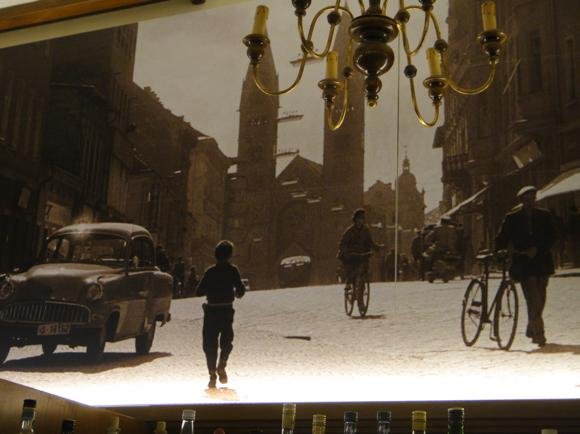







Best bar in town, bar none, is Gambrinus (Gledališka ulica 11), the only outlet in Slovenia for micro-brewed Czech Poutník beer from Pelhřimov. Tucked away off Slovenska, it gathers a cheery group of regulars around a bar counter manned by Juve and NK Korotan (long story) fan Luka, its cosy interior decorated with random football scarves and old beer ads. Leaving it is next to impossible.
If you’ve just arrived by train, the Shakespeare at Cafova ulica 6, with its sun-catching terrace, isn’t a bad place to start your visit, while Plac facing the Franciscan Church contains lovely black-and-white photos of vintage Maribor.
Finally, over the river, by Maribor Tabor station, Holmes Pub (Žitna ulica 12) shows matches while Red’s Pub (Jezdarska ulica 7) is a bar shrine to Liverpool FC.
Where to stay
The best hotels for the stadium and city centre






The Maribor Tourist Information Centre has a hotel reservation service.
As the Ljudski Vrt is close to the city centre, most accommodation options are within easy reach. The closest in town to the ground is the ibis Styles Maribor City Center, recently converted from the Hotel Orel, affordable and convenient. Around the main square, Glavni trg, also walkable and with a direct bus to the ground, the Hotel Maribor is a notch above, 13 luxurious apartments in a historic building, with a spa to boot.
Close by, and also near a clutch of bars, the modern Boutique Hostel Lent (Koroška cesta 13, +386 70 663 005) is more guesthouse than YHA, offering various kinds of singles and doubles at knockdown prices.
The Hotel City Maribor is a modern, downtown three-star near the Drava river with a terrace restaurant. The Mercure Maribor Centre, until recently the Piramida, offers mid-range rooms with a leisure centre, close to the bus station.


